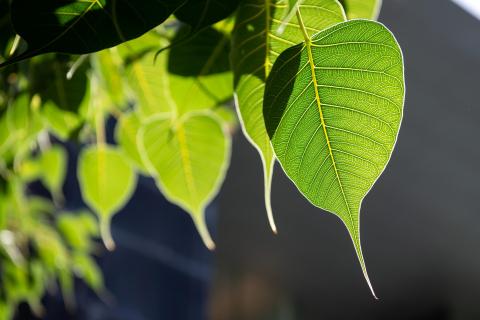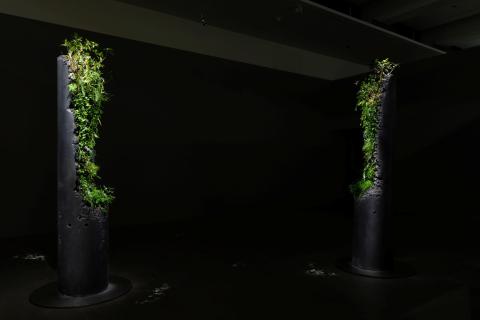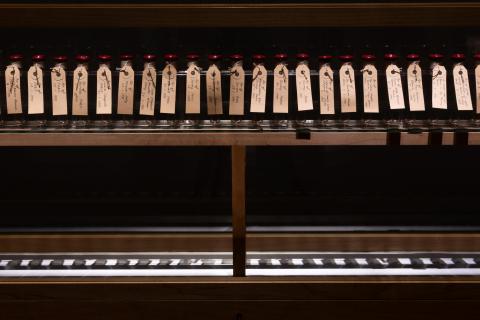AIR: Katie Paterson
Katie Paterson
United Kingdom b.1981
To Burn, Forest, Fire 2021
Bespoke incense sticks
Dimensions variable
Originally commissioned by IHME Helsinki, 2021
Courtesy: The artist
Katie Paterson’s To Burn, Forest, Fire 2021 unfurls gradually via the wafting aromas of incense, a highly sensory experience that transports us to the imagined extremes of evolutionary time. In the gallery space, two small incense sticks — an acid green one labelled ‘First Forest’ and a darker green one designated ‘Last Forest’ — stand on a tray in a recessed niche, marking either end of a vast epoch. Each morning, the fragrance embalmed in these incense sticks is released during a ceremonial offering, which takes place by the Bodhi tree at the entrance to GOMA. As part of this formality, a bell rings, a text explaining the artist’s intention is read, and those present are invited to experience the rich, olfactory evocations of both the first-ever forest on Earth and the last-ever forest in the age of climate crisis. As the incense burns, its smoky articulations heighten our awareness of ecologies and environments currently imperilled. Raising the spectre of their extinction, Paterson encourages us to reflect on how our actions have shaped and hastened this threat.

Katie Paterson’s To Burn, Forest, Fire (detail) 2021 / Commissioned by IHME Helsinki, 2021 / Courtesy and © Katie Paterson / Photograph: Veikko Somerpuro
Paterson worked with a global team of researchers to understand the ecological composition and profile of each fictitious forest, drawing on detailed scientific knowledge about the long-term evolution of life on Earth. Together with geologists, biologists and ecologists, she arrived at an imagined character for the first primeval forest by taking her cue from a petrified North American forest dating to the middle of the Devonian period, some 385 million years ago. Captured and concentrated in a bespoke incense stick by the renowned Japanese atelier Shoyeido, the scent of ‘First Forest’ is described by the artist as one of ‘swampy decay’. Its fragrance notes are shaped by the prehistoric soil’s cultivation of ferns, algae, fungi and early invertebrate insect life, but not yet sweet-smelling flowers or modern-day vegetation.



